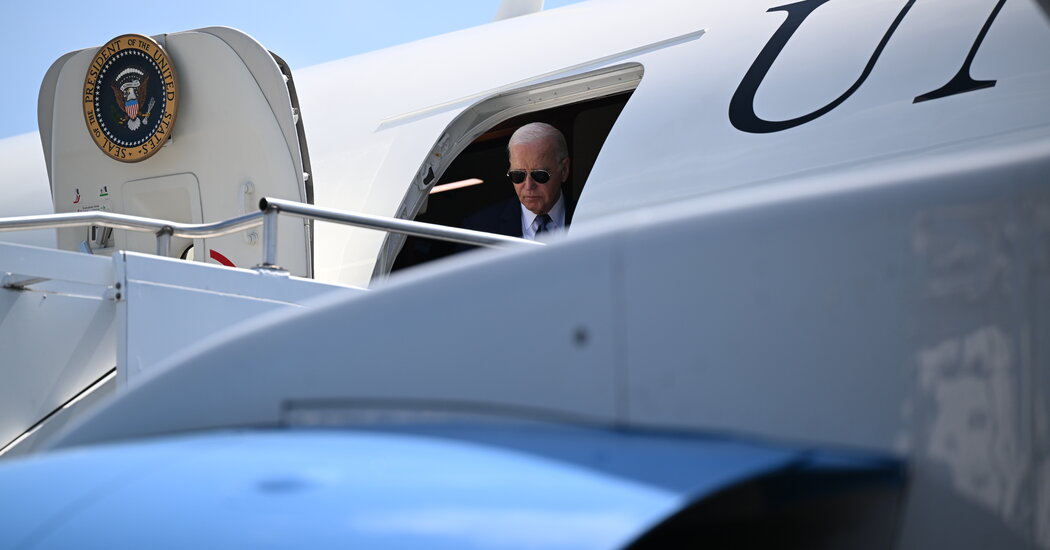
Air Force One is plenty comfortable if you are its most privileged frequent flier, with a comfortable bedroom and a spacious office.
Still, most American presidents will try to avoid making two back-to-back round trips to Europe, separated by about 60 hours on the ground at home. Yet that is what President Biden is pulling off this week.
“The president’s schedule is jam-packed. It is,” said Karine Jean-Pierre, the White House press secretary. “There is a lot to be done on behalf of the American people.”
Mr. Biden left the United States for D-Day celebrations in France last Wednesday, June 5; stayed the weekend for a state dinner in Paris; and returned to his home in Delaware late Sunday. He left Washington again early Wednesday, June 12, to fly to the southeast coast of Italy for the annual gathering the Group of 7, the traditional summit of leaders of Britain, Canada, France, Germany, Italy and Japan.
When Mr. Biden looks back at those two round trips — roughly a day and a half of flying, all told — he may remember only what happened in between: the conviction of his only living son, Hunter Biden, on charges of lying to obtain a gun permit.
But the two round trips raise the question: Why didn’t he just stay in Europe for a couple days, play a round of golf, visit some American troops, maybe huddle with a foreign leader or two? He is, after all, 81, and some of his aides who are half his age were complaining about lost sleep cycles.
The White House’s explanation for four trans-Atlantic crossings in nine days was simply that Mr. Biden had commitments in Washington. But by presidential standards, his public schedule looked light: a lunch with Vice President Kamala Harris, a Juneteenth concert and a speech to a gun-safety group.
Hunter Biden’s trial also loomed over the planning, though it was impossible to know when these trips were planned that the case would go to the jury and a verdict would be rendered in the three days between the D-Day trip and the G7 meeting. As it turned out, Mr. Biden shuttled back to Delaware on Tuesday afternoon to be with his son before taking off again in the morning.
But privately, some aides said there were election-year optics to be considered. There was no urgent reason to stay in Europe, and a few down days “might not look right,” one of Mr. Biden’s advisers conceded, though the aide quickly added that Mr. Biden never really took a down day. In any case, no one wanted images of the president on what his political opponents might cast as a European holiday, at least while he is running for re-election. A long weekend in Rehoboth, the Delaware town where he and his wife, Jill, have a beach house, might be one thing; a few days in France or Italy have an entirely different look.
The presidency, of course, is the ultimate work-from-anywhere job. There are instant communications (a White House van, bristling with antennas, travels in every motorcade) and a staff of hundreds ready to cater to every contingency, whether that involves sending off a thank-you note or launching a retaliatory nuclear strike.
The intolerance for seeing presidents abroad, save for work, has a long history. Franklin D. Roosevelt loved to camp at Campobello Island, in Canada, though as president he kept the visits brief. When Harry S. Truman went to Potsdam, Germany, to negotiate with Joseph Stalin and Winston Churchill about what post-World War II Europe would look like, he stayed for more than two weeks. There were days off from the negotiations, but not for long, and the nearest big city, Berlin, was a bombed wreck. And there was a reminder of the risks of being out of town: Churchill’s party lost to Labour during the conference, and he got booted out of office while it was still going on.